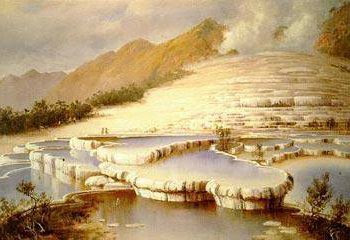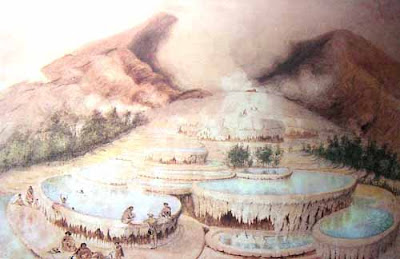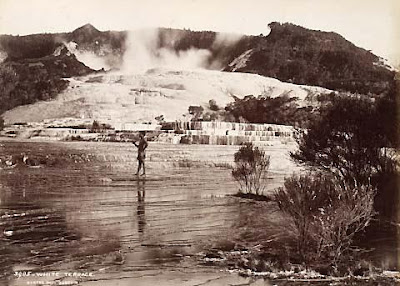A team of paleontologists thinks it may have identified the earliest known dinosaur—a creature no bigger than a Labrador retriever that lived about 243 million years ago. That's at least 10 million years earlier than the oldest known dinos and could change researchers' views of how they evolved. But some scientists, including the study's authors, caution that the fossils could instead represent a close dino relative.
Tracing back the earliest dinosaurs has not been easy. Fossils that old tend to be fragmentary, and researchers don't always agree about their evolutionary pedigree. Paleontologists do agree, however, that pint-sized specimens found in Argentina and dated to 230 million years ago—with names like Eoraptor and Eodromaeus—are true dinosaurs. And in 2010, a team led by Sterling Nesbitt, a paleontologist at the University of Washington, Seattle, reported in Nature the discovery of a close dinosaur relative in Tanzania's Manda Beds, a geological formation dated to between about 242 million and 245 million years ago. That specimen, called Asilisaurus, is not a dinosaur, but belongs to a so-called "sister taxon"—that is, the closest it can be to a dinosaur without actually being one.
That made Nesbitt and his colleagues take a closer look at what else has been found in the Manda Beds. One set of fossils, including an arm bone and several vertebrae, had been discovered in the 1930s and studied for decades by Alan Charig, a famed paleontologist at London's Natural History Museum. Before he died in 1997, Charig named the specimens Nyasasaurus, but he never published his conclusions about whether it was a dinosaur.
For the new study, which also includes Nyasasaurus fossils housed in the South African Museum in Cape Town, Nesbitt's team carried out a systematic comparison of the bones with those of other dinosaurs and their relatives. The researchers, who report their findings today in Biology Letters, find a number of features characteristic of true dinos. For example, Nyasasaurus has a broad crest of bone along the edge of its upper arm, to which the animal's chest muscles would have attached; this crest appears to extend more than 30% of the bone's length, a telltale dino feature. Nyasasaurus also has three vertebrae in its sacrum, the part of the spine that is attached to the pelvis, whereas dino ancestors only had two. And a microscopic study of the arm bone, carried out by team member Sarah Werning of the University of California, Berkeley, shows that it had grown very rapidly during the animal's development, also typical of dinosaurs as well as later mammals and birds.
Nesbitt says that this combination of characteristics, rather than any one taken alone, makes a strong case thatNyasasaurus was "either a dinosaur or the closest relative." Moreover, by the time early dinosaurs such asEoraptor and Eodromaeus show up in Argentina at least 10 million years later, they already represent diverse groups that must have been evolving for millions of years. That means that dinosaur evolution must have begun a considerable time before that, Nesbitt says. And it makes Nyasasaurus a good candidate for an early dino, especially as a very close dinosaur relative, Asilisaurus, was also living in the Manda Beds some 243 million years ago.
| Nyasausaurus |
The team stresses that its findings don't suggest that the earliest dinosaurs evolved in Africa, despite the Tanzanian location of the fossils: At that time, Africa was part of a supercontinent called Pangaea, which also included present-day South America, Antarctica, and Australia. But the results may contradict the views of some researchers that the first dinosaurs diversified in an "early burst" of rapid evolution soon after they appeared.
The authors are "properly careful" in saying that Nyasasaurus is probably, but not definitely, a dinosaur, because the arm bone is not complete, says Michael Benton, a paleobiologist at the University of Bristol in the United Kingdom. But even if the team is not "100% certain" that it's a true dinosaur, Benton adds, the existence of a close dinosaur relative that early "guarantees [dinosaurs] must have originated then also."
Max Langer, a paleontologist at the University of São Paulo in Brazil, agrees that the fragmentary nature of the arm bone makes estimates of the length of its crest "highly speculative" and argues against making any "bold claims" about finding the earliest dinosaur.
As for the discovery's implications for the "early burst" hypothesis, Stephen Brusatte, a paleontologist at the American Museum of Natural History in New York City, insists that it "doesn't nix the early burst idea at all." IfNyasasaurus is only a sister taxon to dinosaurs, Brusatte says, then the early burst hypothesis "would only be falsified if true dinosaurs lived between the time of Nyasasaurus and the time that we see several species of unequivocal true dinosaurs in Argentina" 230 million years ago.
Nevertheless, Brusatte says, "within the next decade I expect the Manda finds to greatly change our understanding" of the rise of the mighty dinosaurs.


















